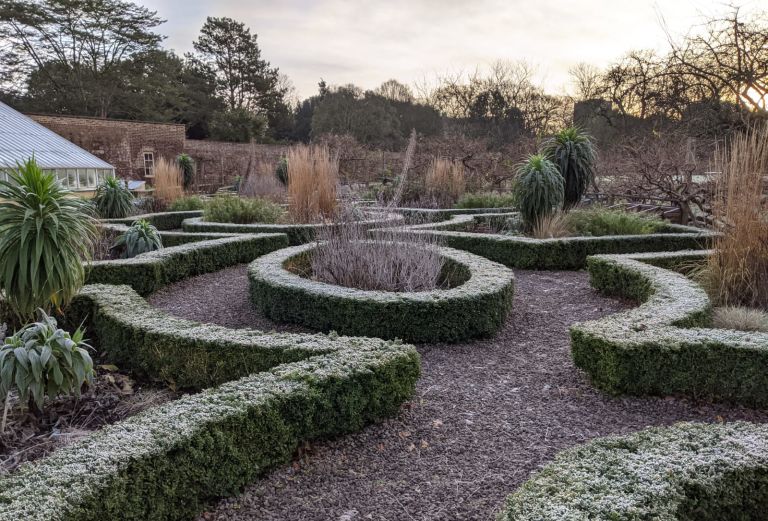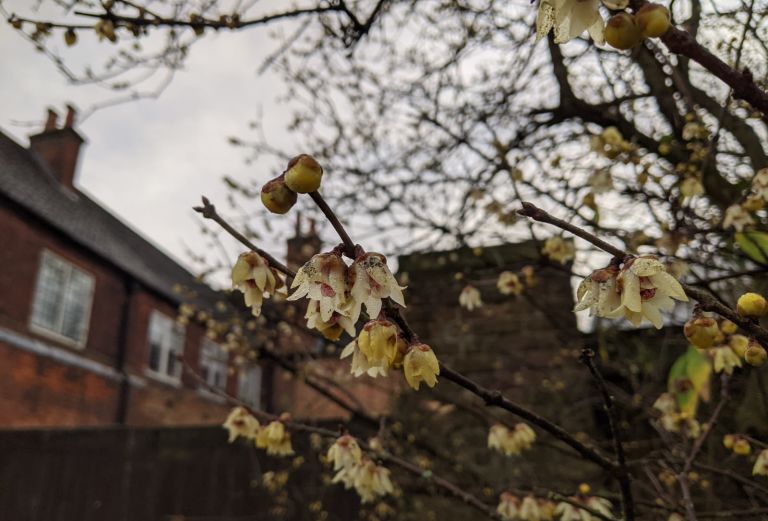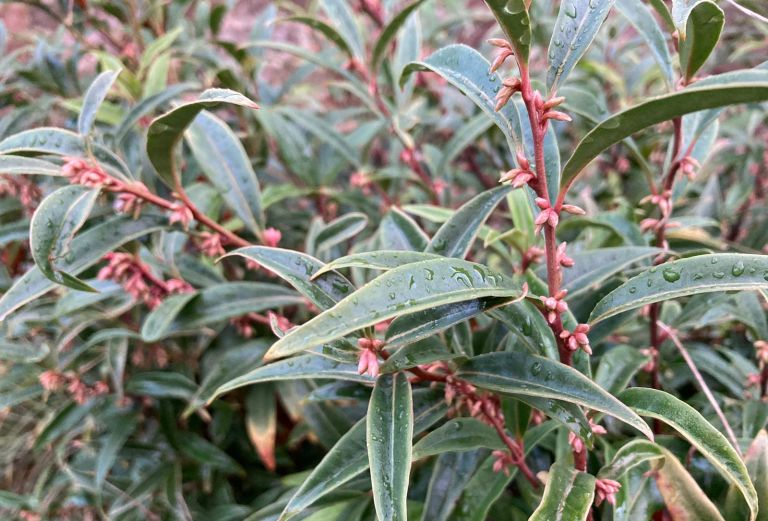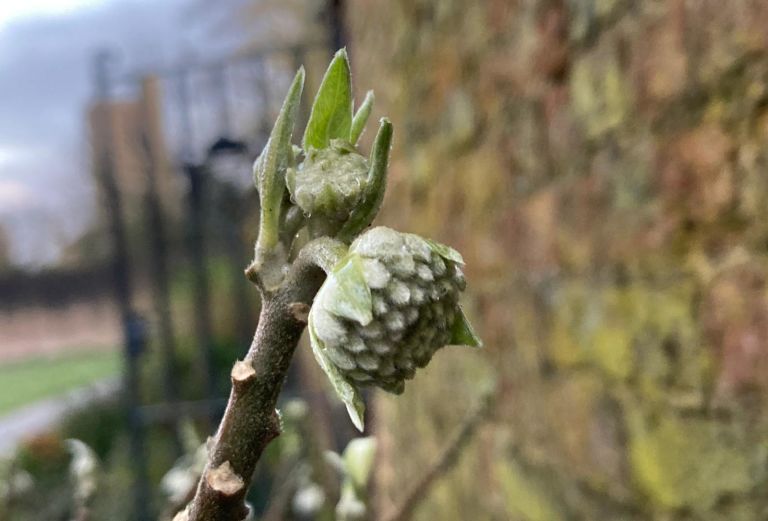
Annette Förger, garden apprentice
It’s getting very cold now in the garden, and the days are so short that the most sensible option seems to stay indoors and enjoy a hot cup of tea accompanied by candlelight and Christmas music… But those who do brave the cold and take a walk around Fulham Palace can be rewarded by discovering some surprising olfactory experiences in the next weeks and months: come and explore some of our winter-flowering plants such as wintersweet, Christmas box, or the curious paper bush!

The flowers of many winter-flowering shrubs are often quite small and insignificant, but many of them awaken the senses with their surprisingly intense fragrance: The first to come into flower is Chimonanthus praecox, wintersweet by its common name – you can find it just a few steps to the right of the old wooden gates into the chapel courtyard where the marquee is, and the flowers are just starting to open right now. The praecox in this plant’s botanical name means “very early” and of course refers to the flowering time very early in the new year. A useful but not necessarily show-stopping shrub with medium-sized lance-shaped leaves in the summer, it comes into its own around this time of year, when the small, pale yellow flowers start to open. They are actually very pretty with their delicate and slightly translucent outer petals and reddish-purple middle, but their real attraction is their wonderful, slightly spicy fragrance.

If you walk along the north border inside the walled garden, you will find several specimen of the small evergreen shrub Sarcococca – Christmas box or sweet box. We actually have two species of this shrub, Sarcococca confusa and Sarcococca hookeriana var. digyna, on both of which you can see lots of small flower buds at the moment. When the small, white flowers start to open in January, their strong vanilla scent wafts through the air all around them. I love these two species which have a lot going for them beyond the scented flowers. S. confusa delights with its glossy, very dark green leaves and black berries, whilst the young stems of S. hookeriana have a very attractive reddish colour.

A few more weeks into the new year, the clusters of tiny flowers on Edgeworthia chrysantha will start to open on the bare branches of this small shrub and delight us with their delicate fragrance, too. Closely related to the Daphnes, Edgeworthia is an interesting looking shrub with very bendy, flexible shoots branching in threes, and attractively patterned bark. The flower clusters sit at the tip of each shoot so that the plant almost looks as if someone decorated it with small yellow baubles. The shrub was named after the Irish botanist Michael Pakenham Edgeworth (1812-1881). Native to China and Japan, its bark is used to make traditional Japanese paper, hence its common name “paper bush”.

There is of course a botanical explanation for the strong fragrance of these wonderful flowering shrubs which goes beyond just lifting our spirits during the cold winter months: they need to attract pollinating insects, of which only very few are around at this time of year – but as many of them have a highly developed sense of smell, the plants have developed the right strategy to lure them with their scent! We hope you find time to walk in the garden this winter and enjoy the species growing this time of year. The closer you look, the more you will discover!